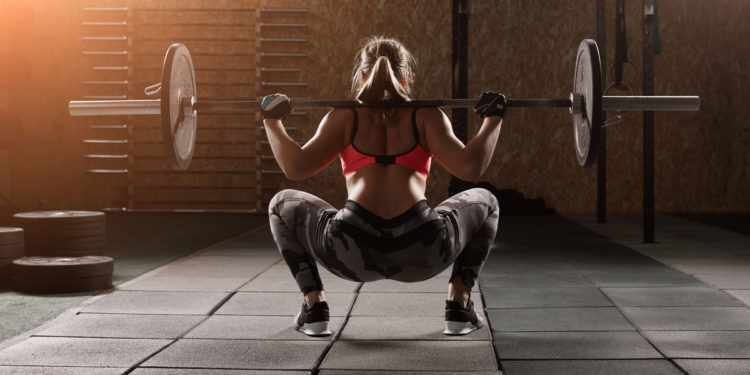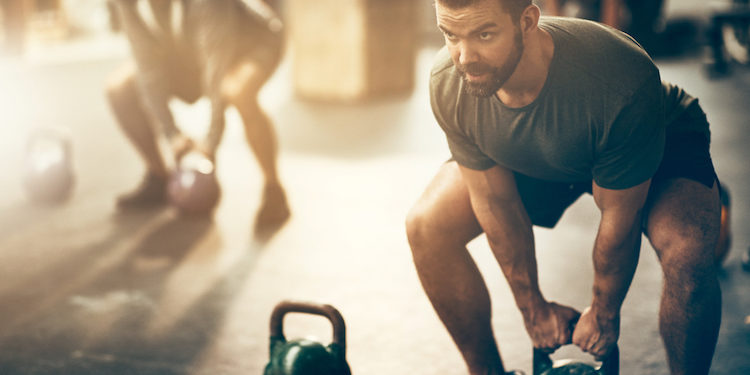As a powerlifter, my main concern is getting stronger. And as a human who’d like to live a real long time, my main concern is developing cardio capacity that’ll keep my heart doing its thing long enough for me to write approximately a billion more novels.
But conventional gym wisdom says that — after we achieve a certain level of fitness — we need to specialize. Cool it on the cardio when you’re powerlifting, and vice versa. Strength versus size. Power versus agility. Flexibility versus… you get the idea. But as athletes, can we have it all?
Increasing work capacity — the amount of work your body can handle in a concentrated period of time — is an important component of “having it all.” In the gym, having it all means being well-rounded athlete proficient in General Physical Preparedness (GPP). Giving yourself a baseline in GPP means refusing to be the athlete that sacrifices strength for speed or power for flexibility: GPP means you’re ready for anything. And if you do it right, building a base GPP and using that to expand your work capacity won’t make you a weaker powerlifter — it will make you a stronger athlete. Because increasing GPP and work capacity means that you can train at a higher intensity for longer; you can train more frequently; and you can recover more quickly.
So how do you do it? Let’s count the ways.
Editor’s note: This article is an op-ed. The views expressed herein and in the video are the author’s and don’t necessarily reflect the views of BarBend. Claims, assertions, opinions, and quotes have been sourced exclusively by the author.

Workout Sample One: Cool Down Cardio
If you don’t already do some cardio at the end of your workouts, you’ll want to start slow: even five easy minutes on the bicycle or elliptical to finish off your workout will start to slowly expand your work capacity. Increase your time slowly, working up to at least 15 to 20 minutes of cardio cool down as often as you can. Over the course of four weeks, you want to eventually work up to 15 to 20 minutes at 60% of your max heart rate. Only once you’ve upped the amount to twenty-thirty minutes, you can start heaping on some intensity.
And remember to choose your cardio type wisely. If you like running, that’s fantastic: just remember to keep the intensity low. A lot of lifters are carrying around a lot of extra muscle mass, and you don’t want to beat your joints up too much just at the start of increasing work capacity.
While biking might be good to flush out your legs after a squat session, you probably don’t want to bike the day before a heavy squat session because you want your legs as fresh as possible.

Workout Sample Two: Decrease Intensity ( A Little), Increase Volume (A Lot)
Lifters are often allergic to taking weight off the bar: but if you want to increase your work capacity and ultimately move more weight over time, I promise it won’t hurt to strip the weight by 5-10%. But, you’re going to — over the course of six weeks — increase your training volume.
So if you’re working near-constant 5x5s now with your big lifts, you might want to work towards building higher work capacity by playing with intensity and volume. If you’re doing your Big Three lifts twice a week, you’ll take your typical 5×5 scheme and transform them (for one or both workouts per week, depending on what your body can currently handle) in the following periodization scheme:
- Week One: 5×5 at 80%
- Week Two: 6×6 at 75%
- Week Three: 5×8 at 70%
- Week Four: 5×10 at 65%
- Week Five: 5×10 at 70%
- Week Six: 7×7 at 75%
If you’re just beginning your work capacity journey, you might want to incorporate this new rep scheme into your program one big lift at a time (as opposed to trying to majorly increase volume for all three lifts at once).
Wherever you are in your work capacity journey, by week six, getting back to a heavier 5×5 is going to move so much easier: and lifting for reps easier means lifting for maxes easier. And each time you deload, then run through this cycle again, your numbers are just gonna get bigger. (So is your endurance, but shh, we won’t phrase it like that.)

Workout Sample Three: Push and Pull Heavy Stuff After Lifting Heavy Stuff
Whether you have access to a kettlebell to swing or a sled to drag and push — or a blissful combination of both — add some strong finishers after your heaviest lifts.
Post-Squat Session
Got a sled? Load it up and drag it, then push it — for whatever distance your space allows (just keep it consistent) — and note how much time you need to rest until you’re ready to go again. Go for five sets, back and forth. Next time you go, keep the sled weight the same but try to decrease your rest between sets by five seconds per set. This will be especially delightful (and effective) after a heavy squat session.

Post-Deadlift Session
Working up to sets of 10×10 kettlebell swings after a heavy deadlift session is an excellent way to increase your work capacity. So for example, pick a reasonably heavy weight that you can safely and crisply swing for 5×10. The next big session, add another set for 6×10. Work your way up to 10×10 (preferably every minute on the minute). Then graduate to a heavier bell — you’ll already have heavier lifts and a healthier heart.
But if kettlebells after deadlifting sounds like hell instead of heaven on your lower back, that’s alright. You can also build your deadlifting work capacity with a good old-fashioned session of pullups. If pullups are already in your wheelhouse, go for 3×10 full extension pullups after deadlifting. If pullups aren’t already in your comfort zone, that’s okay! Grab a band to assist you, or jump up for negative pull-ups (a powerful option even if you can already pump out a lot of reps!). Hop up to the bar and control your descent: try for sets of 4×3 (with full five second descents) to start, and move up from there. That will build your pull-up capacity — and your work capacity — in no time.
[Read more: 6 Kettlebell Finishers to Improve Powerlifting Performance.]

Post-Bench Session
After heavy benching, you’ll want to integrate some clapping push-ups to really increase your upper body’s work capacity. Clapping push-ups after your heavy bench sessions can be super helpful at building upper body power and endurance. Start with what you’re comfortable with: if you’re unaccustomed to clapping pushups, go for 3×3 until you can stack on more sets and reps (4×4, 5×5, etc.). When your body’s tolerance for clapping push-ups builds (or if it’s already there), trying going for 3 or 4 sets of 10 after your benching: your work capacity will thank you.
As your volume increases over time, so will your ability to stay in the game longer: because you really can be a solidly conditioned lifter. You’ve just got to work at your work capacity to get there.
Featured image via 4 PM production / Shutterstock